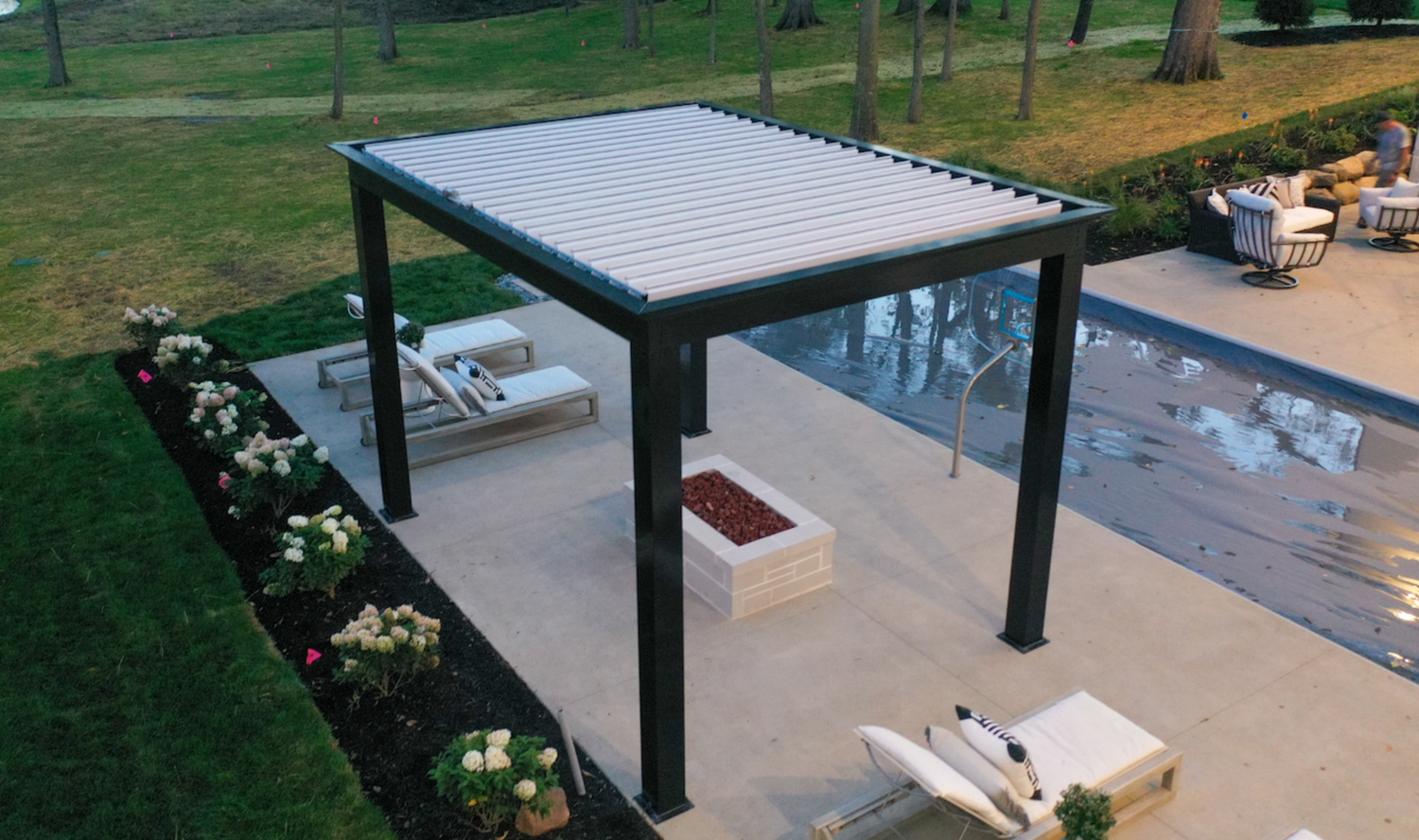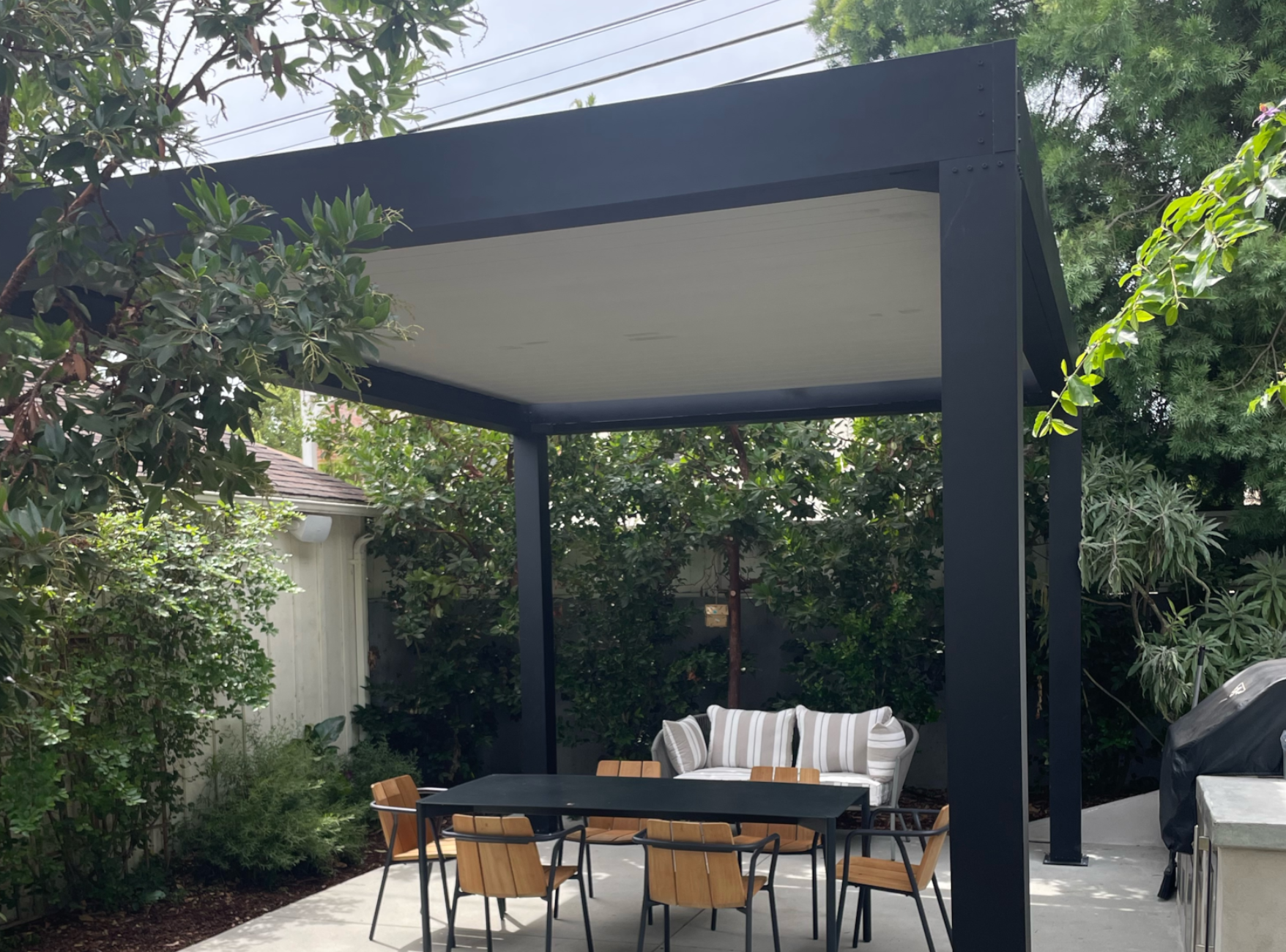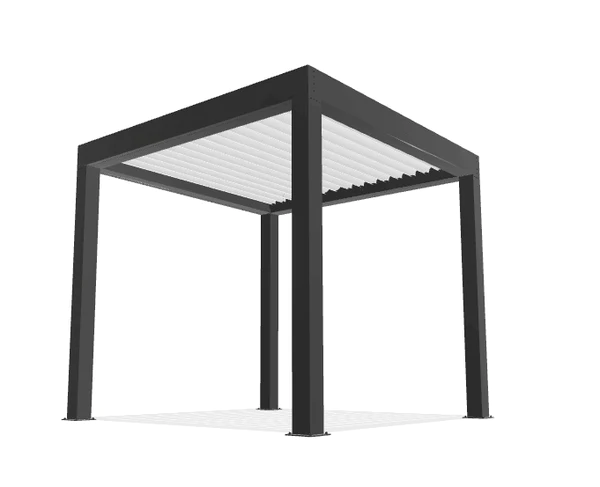Table of Contents
- Introduction
- Types of Pergola Covers
- Canvas or Fabric Covers
- Types of Fabrics Used
- Factors to Consider When Choosing Fabric
- Maintenance and Care of Fabric Covers
- Glass or Polycarbonate Cover
- Types of Glass or Polycarbonate Used
- Factors to Consider When Choosing Glass or Polycarbonate
- Maintenance and Care of Glass or Polycarbonate Cover
- Aluminum or Metal Cover
- Types of Aluminum or Metal Used
- Factors to Consider When Choosing Aluminum or Metal
- Maintenance and Care of Aluminum or Metal Cover
- Wooden Slats or Lattice Cover
- Types of Wood Used
- Factors to Consider When Choosing Wooden Slats or Lattice
- Maintenance and Care of Wooden Slats or Lattice Cover
- Vine or Plant Cover
- Types of Vines or Plants Used
- Factors to Consider When Choosing a Vine or Plant Cover
- Maintenance and Care of Vine or Plant Cover
- Conclusion
Introduction
Pergolas are the perfect outdoor addition for those who love spending time in their gardens and backyards. They provide shade, shelter, and a place to relax, entertain, and enjoy the outdoors.
But what do you do when the sun is beating down on you and your guests, or the rain is pouring? This is where pergola covers come in!
You can get sun protection for your outdoor living space by getting a freestanding pergola that can create shade, be aesthetically pleasing, and give most homeowners a fantastic structure.
Pergola covers are an essential component of any pergola, providing protection from the elements and allowing you to use your outdoor space year-round. With so many options available, choosing the right pergola cover can be overwhelming.
Don't worry, though! This article will guide you through the different types of pergola covers and provide you with all the information you need to make an informed decision.
Types of Pergola Covers
There are several types of pergola covers, each with its own unique advantages and disadvantages. These include canvas or fabric covers, glass or polycarbonate covers, aluminum or metal covers, and wooden slats or lattice covers. Let's take a closer look at each of these options!
Canvas or Fabric Covers
Canvas or fabric covers are a popular choice for pergolas. They provide ample shade and shelter, and come in a variety of colors and patterns. Fabric covers are also relatively lightweight, making them easy to install and remove if necessary.
Types of Fabrics Used
There are several types of fabric used for pergola covers, including canvas, polyester, and acrylic. Canvas is a heavy-duty fabric that is highly durable and water-resistant, making it a great choice for outdoor use.
Polyester is a more lightweight option that is also water-resistant and easy to clean. Acrylic is a breathable fabric that is resistant to fading, mildew, and mold, making it a good choice for warm climates.
Factors to Consider When Choosing Fabric
When choosing a fabric for your pergola cover, there are several factors to consider, including:
-
Durability: Choose a fabric that can withstand the elements and last for many years.
-
Water Resistance: A water-resistant fabric is essential for protecting your pergola from rain and moisture.
-
Color and Pattern: Consider the style and color of your pergola and choose a fabric that complements it.
-
Maintenance: Some fabrics may require more maintenance than others, so choose a fabric that is easy to clean and care for.
Maintenance and Care of Fabric Covers
Fabric covers require some maintenance and care to keep them looking their best. To clean your fabric cover, simply hose it down or spot clean as necessary.
If your fabric cover becomes soiled, you may need to wash it with a mild soap and water. Be sure to follow the manufacturer's care instructions for your specific fabric.
Glass or Polycarbonate Cover
Glass or polycarbonate covers provide a modern and stylish look for your pergola. They provide ample protection from the elements, and allow natural light to filter through, creating a bright and airy feel.
Types of Glass or Polycarbonate Used
There are several types of glass or polycarbonate used for pergola covers, including tempered glass, laminated glass, and polycarbonate sheets. Tempered glass is strong and shatter-resistant, making it a safe choice for outdoor use.
Laminated glass provides extra strength and stability, and is also shatter-resistant. Polycarbonate sheets are a lightweight and durable option that is easy to install and provides excellent protection from the elements.
Factors to Consider When Choosing Glass or Polycarbonate
When choosing a glass or polycarbonate cover for your pergola, there are several factors to consider, including:
-
Durability: Choose a material that is strong and long-lasting, especially if you live in an area with harsh weather conditions.
-
Light Transmission: Consider how much natural light you want to filter through your pergola cover, and choose a material that provides the right amount of transparency.
-
Cost: Glass and polycarbonate covers can be more expensive than other options, so consider your budget when making your choice.
-
Maintenance: Glass and polycarbonate covers may require more maintenance than other options, so choose a material that is easy to clean and care for.
Maintenance and Care of Glass or Polycarbonate Cover
Glass and polycarbonate covers require some maintenance and care to keep them looking their best. To clean your cover, simply wipe it down with a soft cloth and soapy water.
Avoid using abrasive cleaning products or scrubbing too hard, as this can scratch the surface of the cover. If your cover becomes damaged, it may need to be replaced.
Aluminum or Metal Cover
Aluminum or metal covers are a durable and long-lasting option for pergolas. They provide excellent protection from the elements and come in a variety of colors and styles.
Types of Aluminum or Metal Used
There are several types of aluminum and metal used for pergola covers, including aluminum, steel, and wrought iron. Aluminum is a lightweight and corrosion-resistant option that is easy to install.
Steel is a strong and durable material that is also resistant to corrosion. Wrought iron is a decorative option that adds a touch of elegance to your pergola.
Factors to Consider When Choosing Aluminum or Metal
When choosing an aluminum or metal cover for your pergola, there are several factors to consider, including:
-
Durability: Choose a material that is strong and long-lasting, especially if you live in an area with harsh weather conditions.
-
Style: Consider the style of your pergola and choose a material that complements it.
-
Color: Aluminum and metal covers come in a variety of colors, so choose one that matches your home and garden.
-
Maintenance: Aluminum and metal covers require minimal maintenance, but may need to be painted or resealed from time to time to protect against corrosion.
Maintenance and Care of Aluminum or Metal Cover
Aluminum and metal covers require minimal maintenance and care to keep them looking their best. To clean your cover, simply wipe it down with a soft cloth and soapy water.
Avoid using abrasive cleaning products or scrubbing too hard, as this can scratch the surface of the cover. If your cover becomes damaged, it may need to be repaired or replaced.
Wooden Slats or Lattice Cover
Wooden slats or lattice covers are a classic and natural choice for pergolas. They provide ample protection from the elements and add warmth and charm to your outdoor space.
Types of Wood Used
There are several types of wood used for pergola covers, including cedar, redwood, and pine. Cedar is a durable and rot-resistant option that is ideal for outdoor use.
Redwood is a strong and stable option that is also resistant to rot and decay. Pine is a lightweight and affordable option that is easy to work with.
Factors to Consider When Choosing Wooden Slats or Lattice
When choosing a wooden slats or lattice cover for your pergola, there are several factors to consider, including:
-
Durability: Choose a wood that is strong and long-lasting, especially if you live in an area with harsh weather conditions.
-
Style: Consider the style of your pergola and choose a wood that complements it.
-
Color: Wooden covers can be left natural or stained to match your home and garden.
-
Maintenance: Wooden covers may require more maintenance than other options, including regular staining or painting to protect against rot and decay.
Maintenance and Care of Wooden Slats or Lattice Cover
Wooden slats or lattice covers require regular maintenance and care to keep them looking their best. To clean your cover, simply wipe it down with a soft cloth and soapy water.
Avoid using abrasive cleaning products or scrubbing too hard, as this can scratch the surface of the wood. To protect your cover from rot and decay, you may need to stain or paint it regularly.
Vine or Plant Cover
Vine or plant covers add a touch of nature and greenery to your pergola. They provide ample protection from the elements and create a serene and peaceful environment in your outdoor space.
Types of Vines or Plants Used
There are several types of vines and plants used for pergola covers, including ivy, wisteria, and jasmine. Ivy is a fast-growing and hardy option that is ideal for covering large areas. Wisteria is a beautiful and fragrant option that adds a touch of elegance to your pergola. Jasmine is a sweet-smelling and hardy option that is also easy to care for.
Factors to Consider When Choosing a Vine or Plant Cover
When choosing a vine or plant cover for your pergola, there are several factors to consider, including:
-
Growth: Choose a vine or plant that grows quickly and covers your pergola in a short amount of time.
-
Maintenance: Some vines and plants may require more maintenance than others, so choose one that is easy to care for.
-
Climate: Consider the climate in your area and choose a vine or plant that thrives in your local conditions.
-
Seasonal Changes: Keep in mind that vine or plant covers may change with the seasons, so choose a material that provides the right amount of shade and privacy throughout the year.
Maintenance and Care of Vine or Plant Cover
Vine or plant covers require regular maintenance and care to keep them looking their best. To keep your vines or plants healthy, you may need to water them regularly, fertilize them, and prune them from time to time.
Conclusion
In conclusion, there are several options for pergola covers, including glass or polycarbonate, aluminum or metal, wooden slats or lattice, and vines or plants. Each option has its own advantages and disadvantages, so consider your needs and budget when making your choice.
Whether you choose a classic and natural wooden slats or lattice cover or a beautiful and fragrant vine or plant cover, you're sure to enjoy your pergola for many years to come!






